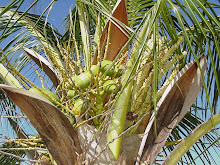It was May 31st and time to start our way back to Florida. When The Colonel and I left my mother's house on that cool (almost cold) Sunday morning we made our way towards Terre Haute and Vincennes. We had planned short stops to visit the campuses of our college days; Indiana State University (ISU) and Vincennes University (VU).
We walked around ISU and never spotted a soul. We did see a few things we recognized but the campus has changed so much and we saw more construction underway. The Quad had changed (except for the scent of Sycamore trees). The Colonel could not find the flagpole that he and other ROTC cadets used to raise the flag upon. He recalled some bitterly cold flag-raising at 6:00 a.m.
The Colonel's dorm was still there but some changes were happening to the parking lot that used to be right in front of it. His dorm is the building on the right.
We were happy to see the Condit House was still there and as beautiful as always. The Condit House is the official residence of the President of ISU. It was built in 1860 by Right Reverend Blackford Condit. He and his family lived in the house from 1862 to 1962. Condit's youngest daughter, Helen, bequeathed the house to the university upon her death in 1962. The Colonel said he has been inside the house. I wish I could say the same.
We walked around campus a little more and ran into this squirrel in a pretty garden.

We are so used to scrawny Florida gray squirrels and were surprised by this fat, sassy, colorful Hoosier one. Yam saw the Indiana squirrels and said they were nearly the size of badgers. She had flown to Indiana with me for a 3-day visit before she had to fly back to Florida to work (and before The Colonel drove up).
It was getting to be cooler and time to drive an hour south to Vincennes. Like ISU, VU had changed so much since I had attended nearly 35 years ago. We did not walk the campus (again no one to be seen). We drove around it and town. We spied historical markers around town and stopped to read them and then we visited the George Rogers Clark Memorial visitor's center. We saw their little museum and purchased a few books. The ranger gave us a map of Vincennes and we saw something on it that I did not know existed (it was far from campus and I did not own a car while in college, so no wonder I did not know of it). The map showed something called the Sugar Loaf Mound.
Sugar Loaf Mound was used by late Woodland Indians as a burial site (A.D. 600-1000). There were rustic steps on the left side of the mound that led up to the top. From below the mound did not seem as steep or high but the steps said otherwise.
The Colonel and I made it to the top. We could see the Wabash River and some of the town of Vincennes. The Colonel then went down the mound as I remained on top so that he could get a photo of me there.
(You can barely see me...let me zoom in for you)
The statue looked very similar to the one in our Florida town. There was some information about the statue on site. It said this was one of Peter "Wolf" Toth's, Whispering Giants. Mr. Toth has made it a goal of his to carve statues out of wood, depicting Native Americans in every state of the union. In May 1988 he reached his goal with a statue in Hawaii.
This particular statue is named Tecumseh. Tecumseh was a Shawnee leader who opposed the United States and became an ally of Britain during the war of 1812. Two years before that war he and 400 armed warriors met with Indiana Governor William Henry Harrison (who later became president) at Grouseland, the Governor's house (it still stands on the grounds near VU) and demanded the removal of the land purchase treaties the US had forced on the Shawnee and other tribes. Harrison refused.
Tecumseh began to incite the warriors to kill Harrison. Harrison drew his sword and the small garrison defending Vincennes quickly moved to protect Harrison. A Potawatomi Chief arouse and countered Tecumseh's arguments and urged the warriors to leave in peace. They did but Harrison and Tecumseh would cross paths again in 1811.
This Toth statue was carved in 2009. It is carved out of an oak tree and is 23-feet tall.
The Toth statue in my Florida town was carved in 1974. It is 30-feet tall and is made from the Guanacasta tree, Costa Rica's national tree. It is an effigy to the first native peoples who lived in this area; The Calusa and The Timucuan. The statue is called Calostimucu. There are two faces on this statue. The female has an eagle on her head and the male has an upside down bison on his head.
The last interesting thing "Ole Eagle-Eye" spied before we put Vincennes behind us was this huge watermelon.
What on Earth? I knew that watermelons were grown in this area, so maybe this was a parade float. My Internet research has revealed to me that this 18-foot, 500-pound watermelon is used to help ring in the New Year. It is raised into the air by a crane and at midnight it is lit up and a trap door on its bottom drops 12 Knox County watermelons. There are fireworks going on at the same time. The festivities begin at 9 p.m. with music, Karaoke, toys, glow sticks, food, hot chocolate, noise makers and a beer/wine garden. Sounds like good old Hoosier fun to me.
With Vincennes in our rear view mirror with headed towards New Harmony, Indiana.


















































No comments:
Post a Comment